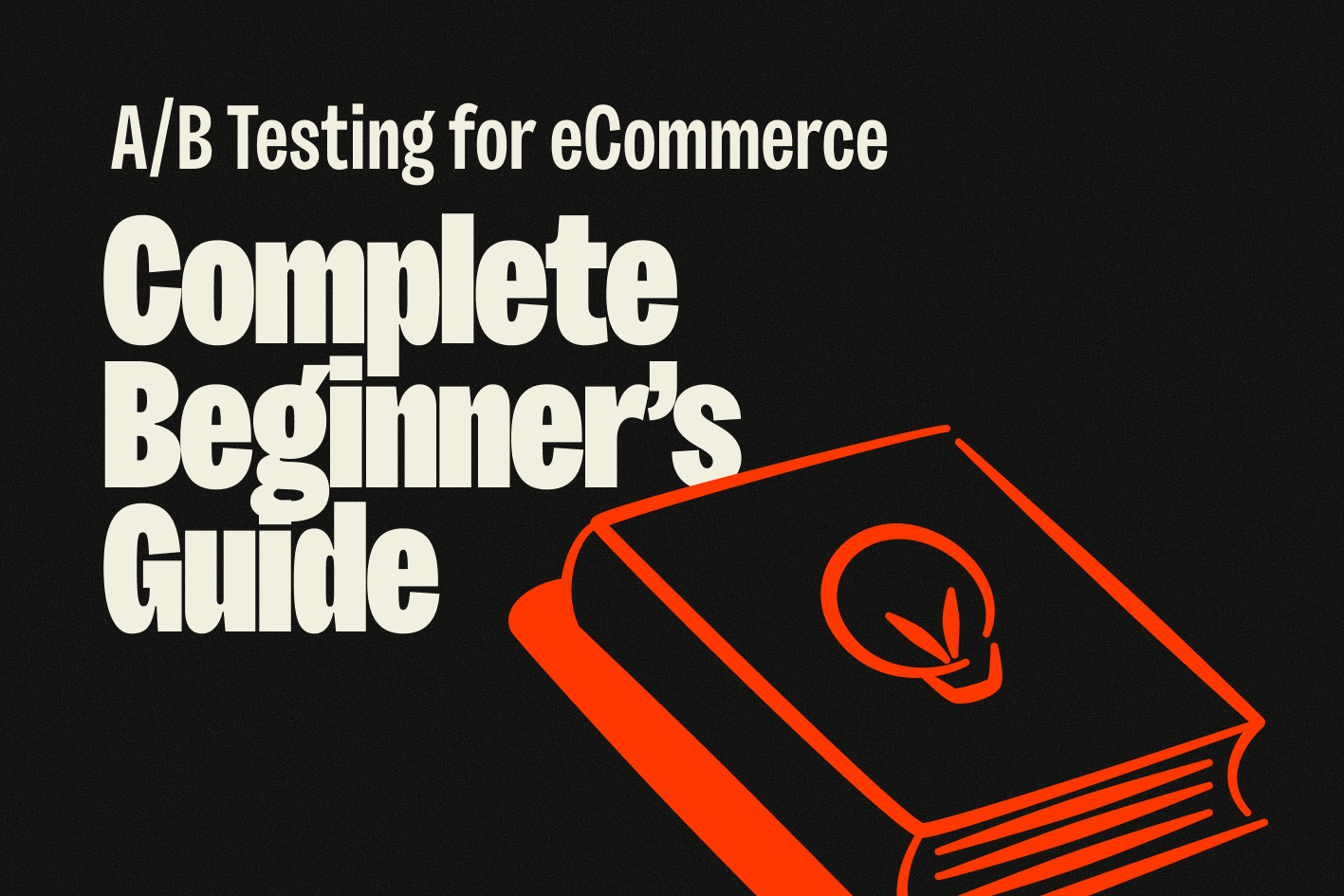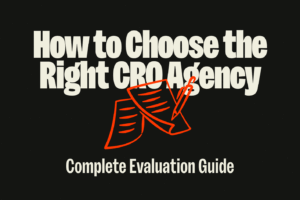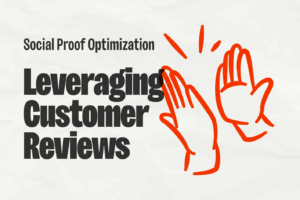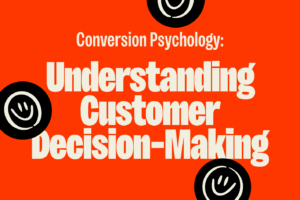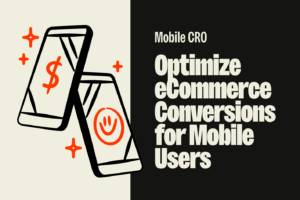A/B testing transforms guesswork into data-driven decisions that can increase your eCommerce conversion rates by 20-30% on average. Yet 70% of online retailers still make critical website changes based on opinions rather than evidence, missing opportunities to significantly boost revenue with systematic testing.
For eCommerce businesses, every element of your site—from product descriptions to checkout buttons—represents a conversion opportunity that can be optimized through strategic testing. The difference between successful and struggling online stores often comes down to their commitment to continuous experimentation and improvement.
In this guide
What is A/B Testing for eCommerce?
A/B testing (also called split testing) is a controlled experiment where you compare two versions of a webpage, email, or app feature to determine which performs better for your conversion goals. In eCommerce, this means testing different versions of product pages, checkout flows, or marketing campaigns to identify which drives more sales.
Core Principles
A/B testing follows scientific methodology by:
- Isolating variables to test one change at a time
- Random traffic allocation between test variations
- Statistical analysis to determine significant results
- Controlled timing to account for external factors
Benefits for Online Stores
Systematic A/B testing delivers measurable benefits:
- Revenue increases of 15-25% through conversion optimization
- Reduced bounce rates by identifying friction points
- Improved customer experience through data-backed decisions
- Risk mitigation before implementing major changes
- Competitive advantages through continuous optimization
Difference from Other Testing Methods
Unlike multivariate testing (testing multiple elements simultaneously) or user testing (qualitative feedback), A/B testing provides quantitative proof of performance differences between specific variations, making it ideal for eCommerce decision-making.
When to Use A/B Testing in eCommerce
High-Traffic Requirements
Effective A/B testing requires sufficient traffic to reach statistical significance. Most eCommerce tests need:
- Minimum 1,000 visitors per variation for reliable results
- At least 100 conversions per variation for purchase-focused tests
- 2-4 week testing periods to account for traffic variations
- Consistent traffic patterns without major external influences
Clear Success Metrics
Define specific, measurable goals before testing:
- Conversion rate improvements (primary eCommerce metric)
- Revenue per visitor increases
- Average order value optimization
- Email signup rates for lead generation
- Cart abandonment reduction
Testable Hypotheses
Strong A/B tests begin with clear hypotheses based on:
- Analytics insights showing user behavior patterns
- Customer feedback highlighting pain points
- Heatmap analysis revealing interaction patterns
- Industry best practices suggesting improvements
- Conversion audit findings identifying optimization opportunities
Business Impact Potential
Prioritize tests with high potential impact:
- High-traffic pages affecting many customers
- Critical conversion points in the purchase funnel
- Expensive traffic sources requiring optimization
- Seasonal campaigns with time-sensitive results
Essential A/B Testing Elements for eCommerce

Product Page Testing
Product pages often represent your highest-impact testing opportunities:
Key elements to test:
- Product titles and descriptions for clarity and persuasion
- Image galleries and zoom functionality
- Price presentation and discount displays
- Add to cart button design, color, and placement
- Product reviews display and filtering options
- Trust signals like security badges and guarantees
Example test: Testing “Add to Cart” vs. “Buy Now” button text resulted in 12% conversion increase for a fashion retailer.
Checkout Process Optimization
Checkout optimization can reduce abandonment rates by 35% or more:
Critical testing areas:
- Single vs. multi-page checkout flows
- Guest checkout options vs. required registration
- Payment method presentation and ordering
- Form field requirements and validation
- Progress indicators and completion estimates
- Security messaging and trust elements
Homepage and Landing Page Tests
Homepage tests impact overall site performance:
High-impact elements:
- Hero section messaging and value propositions
- Navigation structure and category organization
- Featured product placement and promotion strategies
- Call-to-action placement and design
- Social proof elements like customer logos and testimonials
Email Marketing Campaigns
Email A/B testing improves engagement and revenue:
Testable components:
- Subject lines for open rate optimization
- Send times and frequency strategies
- Email design and layout variations
- Call-to-action buttons and placement
- Personalization elements and product recommendations
Cart and Category Page Elements
Cart and category optimization captures additional revenue:
Testing opportunities:
- Product listing layouts and information density
- Filtering and sorting options for easier discovery
- Cart abandonment messaging and incentives
- Cross-sell and upsell product recommendations
- Shipping information and cost transparency
A/B Testing Process and Methodology

Hypothesis Formation
Develop testable hypotheses using this framework: “If [change], then [outcome] because [reasoning based on data/research]”
Example: “If we change the checkout button from ‘Continue’ to ‘Secure Checkout’, then conversion rates will increase because customers need reassurance about payment security.”
Test Design and Setup
Effective test design ensures reliable results:
- Single variable testing to isolate impact
- Random traffic allocation (typically 50/50 split)
- Consistent user experience across devices and sessions
- Clear measurement criteria and success metrics
- Predetermined test duration based on traffic calculations
Traffic Allocation and Timing
Strategic timing improves test accuracy:
- Avoid holiday periods unless testing seasonal elements
- Run tests during normal traffic patterns for representative data
- Account for day-of-week variations in customer behavior
- Consider external factors like marketing campaigns or promotions
Data Collection and Monitoring
Monitor tests regularly without making premature decisions:
- Track key metrics beyond primary conversion goals
- Watch for technical issues affecting test integrity
- Monitor traffic quality and source consistency
- Document external factors that might influence results
Results Analysis and Implementation
Analyze results with statistical rigor:
- Verify statistical significance (typically 95% confidence level)
- Check practical significance (meaningful business impact)
- Segment analysis by traffic source and customer type
- Implementation planning for winning variations
Common A/B Testing Mistakes
Testing Too Many Variables
The mistake: Changing multiple elements simultaneously makes it impossible to identify which change drove results.
The solution: Test one variable at a time, or use multivariate testing with sufficient traffic for complex experiments.
Insufficient Sample Sizes
The mistake: Drawing conclusions from tests without enough data to reach statistical significance.
The solution: Calculate required sample sizes before testing and resist ending tests early, even when results look promising.
Ending Tests Too Early
The mistake: Stopping tests as soon as they show positive results, missing potential data quality issues.
The solution: Run tests for predetermined durations to account for traffic variations and ensure data reliability.
Ignoring Statistical Significance
The mistake: Implementing changes based on directional trends rather than statistically significant results.
The solution: Use proper statistical analysis tools and only implement changes that reach significance thresholds.
Not Learning from Failed Tests
The mistake: Viewing unsuccessful tests as failures rather than learning opportunities.
The solution: Document all test results and insights to inform future hypothesis development and testing strategies.
A/B Testing Tools for eCommerce
Google Optimize and Analytics
Google Optimize provides free A/B testing capabilities with:
- Visual editor for easy test creation
- Analytics integration for comprehensive reporting
- Audience targeting for specific customer segments
- Goal tracking for conversion measurement
Best for: Small to medium businesses with basic testing needs and Google Analytics implementations.
Shopify Native Testing
Shopify Plus includes built-in testing features:
- Theme testing for design variations
- Checkout customization testing options
- App integration for advanced functionality
- Performance monitoring and optimization tools
Best for: Shopify merchants seeking platform-integrated solutions with minimal technical requirements.
Third-Party Testing Platforms
Advanced platforms offer sophisticated testing capabilities:
Optimizely: Enterprise-grade testing with advanced segmentation VWO: Visual editor with heatmap integration Unbounce: Landing page focused testing Convert: Privacy-focused testing platform
Best for: High-traffic sites requiring advanced features, complex experiments, or specific compliance requirements.
Technical Implementation Requirements
Consider technical factors when choosing tools:
- Page load impact from testing scripts
- Mobile compatibility and responsive design
- Integration capabilities with existing analytics
- Custom event tracking for complex conversion goals
Analyzing and Acting on Test Results
Statistical Significance Understanding
Statistical significance indicates whether results are likely due to your changes rather than random chance. Key concepts:
- 95% confidence level is standard for most eCommerce tests
- P-values below 0.05 typically indicate significance
- Effect size measures practical importance beyond statistical significance
- Power analysis helps determine required sample sizes
Winner Implementation Strategies
Implement winning variations systematically:
- Full rollout for clear winners with strong statistical significance
- Gradual implementation for major changes affecting user experience
- Segmented rollout when results vary by customer type or traffic source
- Monitoring phase to ensure results persist after full implementation
Learning Documentation
Document all tests for organizational learning:
- Hypothesis and reasoning for future reference
- Test setup and methodology for replication
- Results and statistical analysis with supporting data
- Implementation decisions and post-test performance
- Insights and implications for future testing
Next Test Planning
Use results to inform future testing priorities:
- Build on winning variations with additional optimization tests
- Address new questions raised by test results
- Expand successful concepts to other areas of the site
- Revisit failed tests with refined hypotheses and approaches
Advanced A/B Testing Strategies
Multivariate Testing
Test multiple elements simultaneously when you have sufficient traffic:
- Requires 4x more traffic than simple A/B tests
- Identifies interaction effects between different elements
- Useful for complex pages with multiple optimization opportunities
- Provides comprehensive insights about element combinations
Personalization Testing
Test personalized experiences for different customer segments:
- New vs. returning visitors with different messaging
- Geographic targeting for regional preferences
- Device-specific optimization for mobile vs. desktop
- Behavioral targeting based on browsing history
Mobile-Specific Testing
Mobile commerce requires dedicated testing attention:
- Touch interaction optimization for better usability
- Loading speed variations for different connection types
- Simplified checkout flows for mobile constraints
- App vs. mobile web experience optimization
Seasonal and Campaign Testing
Time-sensitive testing for maximum impact:
- Holiday promotional strategies and messaging
- Seasonal product presentation and recommendations
- Campaign landing pages for advertising traffic
- Limited-time offers and urgency messaging
Professional A/B Testing Services
When to Hire Testing Experts
Consider professional A/B testing services when:
- Internal resources are limited for consistent testing programs
- Technical expertise is needed for complex implementations
- Strategic guidance is required for testing prioritization
- Advanced analytics and insights would benefit your optimization efforts
What to Expect from Professional Services
Professional A/B testing typically includes:
- Testing strategy development aligned with business goals
- Hypothesis generation based on data analysis and industry expertise
- Technical implementation and quality assurance
- Results analysis and reporting with actionable insights
- Ongoing optimization roadmaps for continued improvement
How Glued Approaches eCommerce Testing
Our comprehensive A/B testing methodology combines:
- Data-driven hypothesis development using analytics and user research
- Strategic test prioritization focusing on high-impact opportunities
- Technical excellence ensuring reliable, accurate results
- Business-focused analysis connecting test results to revenue outcomes
- Continuous optimization programs for sustained growth
Ready to start systematic A/B testing for your eCommerce store? Our team specializes in conversion optimization through strategic testing that drives measurable revenue growth. Get a free conversion audit to identify your highest-impact testing opportunities.
